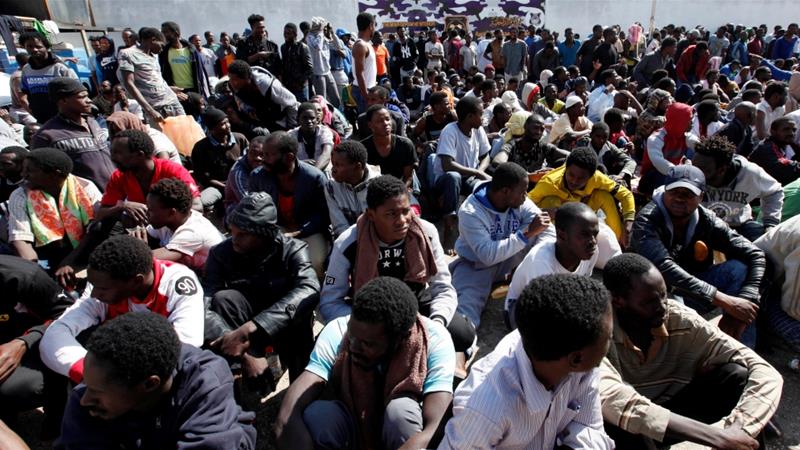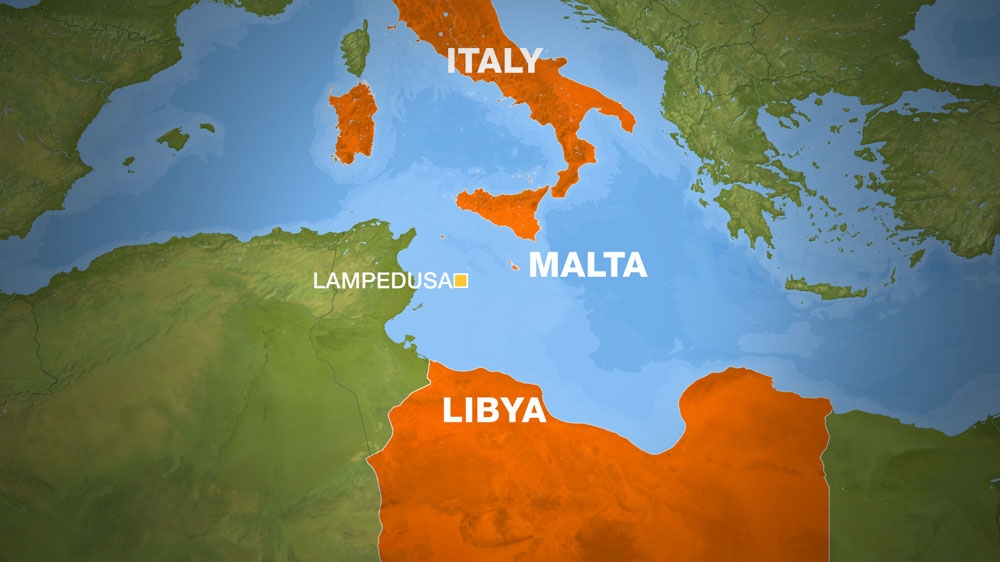International Organization for Migration: African Migrants Traded in Libya’s ‘Slave Markets’
MIDDLE EAST AND NORTH AFRICA, 17 Apr 2017
Al Jazeera – TRANSCEND Media Service
People are held for ransom, forced labour or sexual exploitation after being sold for up to $500, UN agency says.
11 Apr 2017 – Hundreds of African refugees and migrants passing through Libya are being bought and sold in modern-day slave markets before being held for ransom or used as forced labour or for sexual exploitation, survivors have told the UN’s migration agency.
The International Organization for Migration (IOM) said on Tuesday that it had interviewed West African migrants who recounted being traded in garages and car parks in the southern city of Sabha, one of Libya’s main people-smuggling centres.
People are bought for between $200 and $500 and are held on average for two to three months, Othman Belbeisi, head of the IOM’s Libya mission, said in Geneva.
“Migrants are being sold in the market as a commodity,” he said. “Selling human beings is becoming a trend among smugglers as the smuggling networks in Libya are becoming stronger and stronger.”
The refugees and migrants – many from Nigeria, Senegal and The Gambia – are captured as they head north towards Libya’s Mediterranean coast, where some try to catch boats for Italy.
Along the way, they are prey to an array of armed groups and people-smuggling networks that often try to extort extra money in exchange for allowing them to continue.

Libya is the main gateway for people attempting to reach Europe by sea [File: Ismail Zitouny/Reuters]
READ MORE: Refugee child abuse rampant in Libya, says UNICEF
Most of them are used as day labourers in construction or agriculture. Some are paid but others are forced to work for no money.
“About women, we heard a lot about bad treatment, rape and being forced into prostitution,” Belbeisi said.
The IOM said it had spoken to one Senegalese migrant who was held in a Libyan’s private house in Sabha with about 100 others, who were beaten as they called their families to ask for money for their captors.
He was then bought by another Libyan, who set a new price for his release.
Some of those who cannot pay their captors are reportedly killed or left to starve to death, the IOM said. When migrants die or are released, others are purchased to replace them.
‘Valley of tears’
The agency said migrants are buried without being identified, with families back home uncertain of their fate.
“The situation is dire,” Mohammed Abdiker, IOM’s director of operations and emergencies, who recently returned from a visit to Libya’s capital, Tripoli, said in a statement, calling Libya a “valley of tears” for many refugees and migrants.
“What we know is that migrants who fall into the hands of smugglers face systematic malnutrition, sexual abuse and even murder,” he added.
“Last year we learned 14 migrants died in a single month in one of those locations, just from disease and malnutrition. We are hearing about mass graves in the desert.”
To warn potential migrants, the IOM is spreading testimonies of victims through social media and local radio stations.
Libya is the main gateway for people attempting to reach Europe by sea, with more than 150,000 people making the crossing in each of the past three years.
So far this year an estimated 26,886 migrants have crossed to Italy, over 7,000 more than during the same period in 2016.
More than 600 are known to have died at sea, while an unknown number perish during their journey north through the desert.
‘HORRIBLE STORIES’
“Over the past few days, I have discussed these stories with several who told me horrible stories.
“They all confirmed the risks of been sold as slaves in squares or garages in Sabha, either by their drivers or by locals who recruit the migrants for daily jobs in town, often in construction, and later, instead of paying them, sell their victims to new buyers.
“Some migrants – mostly Nigerians, Ghanaians and Gambians – are forced to work for the kidnappers/slave traders as guards in the ransom houses or in the ‘market’ itself.”
— IOM Niger staffer
Go to Original – aljazeera.com
DISCLAIMER: The statements, views and opinions expressed in pieces republished here are solely those of the authors and do not necessarily represent those of TMS. In accordance with title 17 U.S.C. section 107, this material is distributed without profit to those who have expressed a prior interest in receiving the included information for research and educational purposes. TMS has no affiliation whatsoever with the originator of this article nor is TMS endorsed or sponsored by the originator. “GO TO ORIGINAL” links are provided as a convenience to our readers and allow for verification of authenticity. However, as originating pages are often updated by their originating host sites, the versions posted may not match the versions our readers view when clicking the “GO TO ORIGINAL” links. This site contains copyrighted material the use of which has not always been specifically authorized by the copyright owner. We are making such material available in our efforts to advance understanding of environmental, political, human rights, economic, democracy, scientific, and social justice issues, etc. We believe this constitutes a ‘fair use’ of any such copyrighted material as provided for in section 107 of the US Copyright Law. In accordance with Title 17 U.S.C. Section 107, the material on this site is distributed without profit to those who have expressed a prior interest in receiving the included information for research and educational purposes. For more information go to: http://www.law.cornell.edu/uscode/17/107.shtml. If you wish to use copyrighted material from this site for purposes of your own that go beyond ‘fair use’, you must obtain permission from the copyright owner.
Read more
Click here to go to the current weekly digest or pick another article:
MIDDLE EAST AND NORTH AFRICA:

